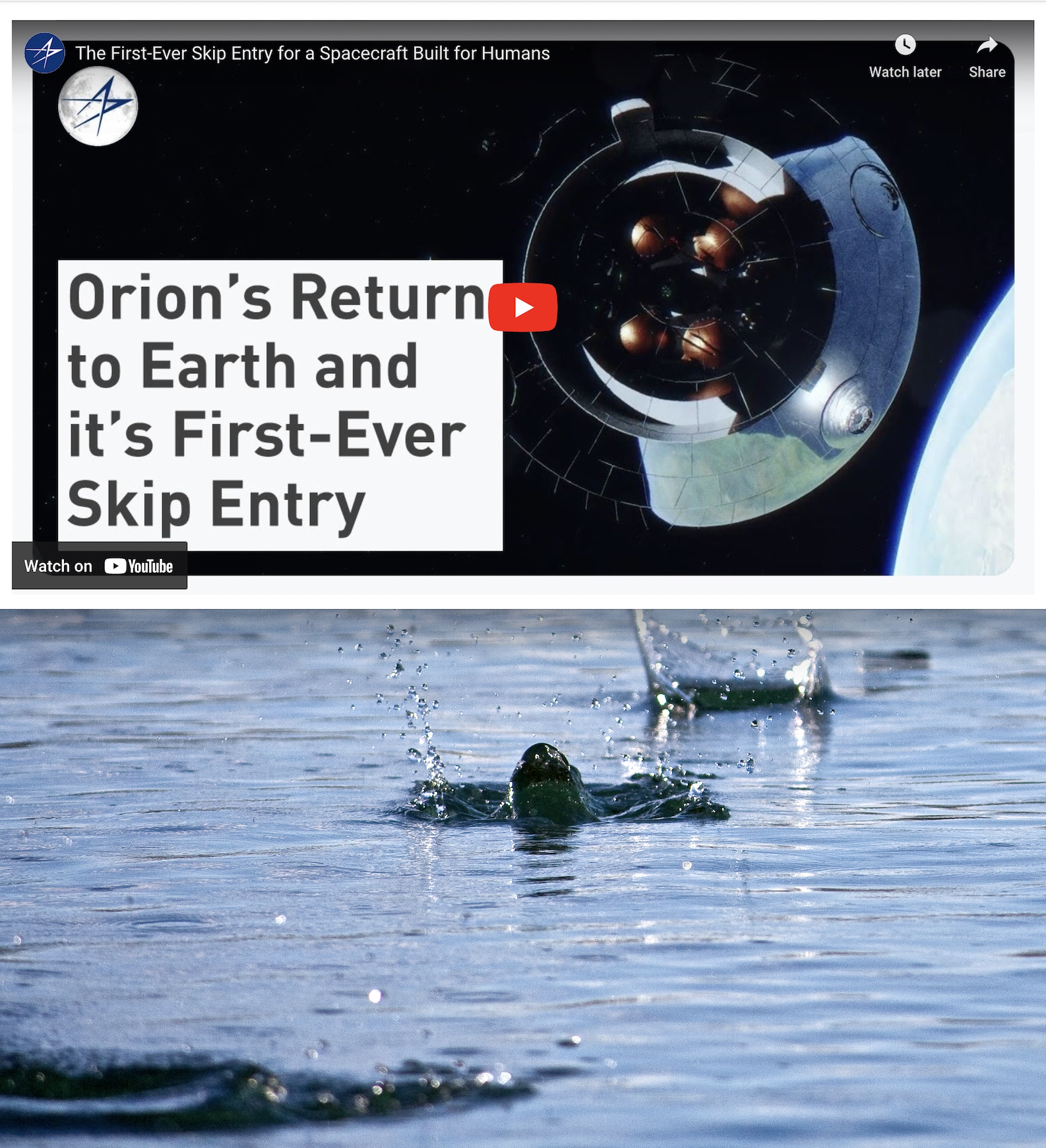Dec. 11 Artemis I Orion Will Attempt First Skip Entry for a Human Spacecraft
/Shortly before 2:30 p.m. CST on Friday Dec. 9, Orion was traveling 171,500 miles from Earth and 214,200 miles from the Moon, cruising at 2,100 mph.
Artemis 1 Orion is on the way home, scheduled for a Sunday Dec. 11 splashdown in the Pacific Ocean near San Diego, CA at 9:40 a.m. PT (12:40 p.m. ET). NASA coverage will begin at 11am ET on NASA Live.
Orion is facing the biggest test ever — a nailbiting, ‘will it work’ skip-entry return to Earth. The male mind is not the engine behind this scientific strategy. Mother Nature shows the way
In fact, the stone-skipping return is one of the most important examples to date of biomimicry or ‘science inspired by nature’. In the AOC link, is a fantastic TED Talk by Janine Benyus, founder of the biomimicry movement.
Orion Return Is ‘Skipping Stone’ Biomimicry Design
NASA describes the return of its Orion spacecraft as ‘priority one’ for the Artemis I mission. Engineers want to see proof that the spacecraft can survive the heat of re-entry into Earth’s atmosphere.
Orion will not simply plunge back into the atmosphere, which would cause it to self-destruct.
Orion will re-enter the Earth’s atmosphere at a speed of 24,500 mph and then bounce off the Earth’s upper atmosphere like a stone skipping across water. This re-entry plan has several key benefits, including bleeding off speed and reducing the G-Force that Artemis astronauts in the future will experience.
This skipping process will slow down Orion to 300 mph, as it decreases its speed, as it travels through temperatures of 5,000°F.
The ‘skip entry’ plan enables the spacecraft to accurately and consistently land at the same landing site regardless of when and where it comes back from the moon. Theoretically, this Artemis route back and forth to the moon will be similar to the Space Station flights, which are almost routine now.
